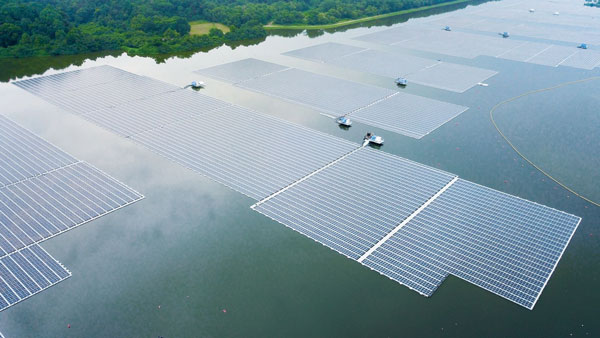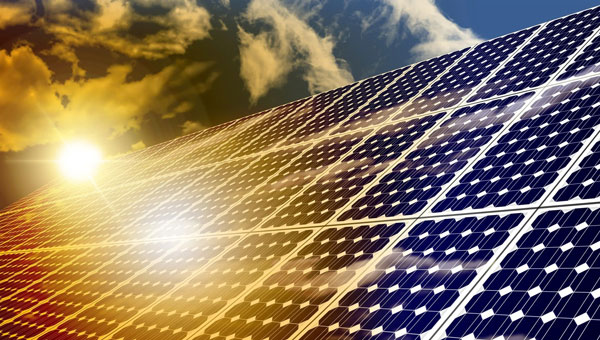Role Of Solar In Reducing Urban Heat Islands
Solar power additionally has the prospective to help to overcome a number of the results of urban heat islands (UHIs), city locations which can be appreciably warmer than their rural surroundings. On the other hand, the installation of solar panels, especially on rooftops, serves a double purpose, it reduces the energy demand by taking advantage of renewable energies and at the same time, reduces the heat absorption by buildings. A 2013 study in the Journal of Industrial Ecology discovered that urban land surfaces warmed to a level up to 2°C greater than rural areas due to dense cities with less greenery—large-scale solar panel installations acting like green roofing to reduce local temperatures.
Cooling Cities
Immediate strategies of UHIs are more on solar reflective surfaces on the buildings and roads. These surfaces reflect more sunlight back into the atmosphere and stay cooler than traditional materials. Los Angeles, for example, launched an effort to cover roads with a special reflective paint that could decrease surface temperature by up to 10 degrees Fahrenheit.
Green Roofs Turning to Solar for More
Combining solar panels with green roofs offers the perfect synergy of electricity generation and more cooling. These absorb CO2 from the air and release oxygen to cool the air, as they are vegetative green roofs. One Chicago-based case study showed that green roofs with solar panels used 6% less energy than normal whilst shading the surrounding air.
Urban Design Sustainable Energy Integration
Urban planning for greenery as well as solar maximize on both environmental fronts. Singapore (SolarNova) aims to deploy solar panels to all feasible rooftops by 2030 and substantially reduce heat island effects throughout the city. It is one thread in a larger tapestry of how the city is improving its sustainability and livability.
Economic and Environmental Costs of Solar in Cities
In addition to the concern for the environment, the introduction of solar power into urban life produces significant economic benefits. Aggressive solar panel installations in cities such as San Diego have led to a reduction in energy costs and have also helped to create jobs locally. The decrease in air conditioning needs due to a lower city temperature can mean some substantial savings and reduced greenhouse gas emissions.

Solar Infrastructure For Sustainable Public Transit
Public transit systems are being transformed, thanks to an environmentally friendly, renewable energy source: solar power. Cities around the world are adding solar power to their public transit systems as a way to lower emissions and increase energy efficiency.
Case Studies and Impact of Solar Power buses
Santiago, Chile, has already successfully integrated solar-powered electric buses into its fleet because of Sarkar and his solar panels. The program, which began in 2019, is a 100 electric bus fleet running entirely on solar energy, and was Santiago's longest bus route powered directly by the sun. Annually, these buses have cut carbon emissions by 37,000 tons with a cleaner and quieter option for public transit riders.
Solar Panel Integration on Transit Stations
At the transit stations, solar panels have the potential to help reduce a huge amount of the energy used every day on location. The Kochi Metro Rail cor covets makes use of man imposed drivers atop regarding its stations as well as admin structures in imitation of produce concerning 1.2 MW boast electricity. This measures addresses ca 60 % of the metro's total electricity demand, a prominent example of energy autonomous public transport operations.
The most popular application is self-contained, solar lighting and signage at transit shelters.
Increased Safety and Efficiency: Solar lighting and solar signage increase safety for public transit users as well as employees of the transit system, and reduced operational costs. Bus stops in San Francisco see a fair amount of action and the new solar-powered lighting systems at select locations are working to ensure that everything runs as smoothly and safely as possible, especially after dark. They are self-sufficient and rely less on the grid, which also minimizes the cost of upkeep.
Issues and Solutions with Solar Transit Projects
While there are many positives, there are still critical challenges in mixing solar to public transit systems like the capital cost involved in investing and technical synchronization. To tackle this, cities like Amsterdam are introducing their strategies in phases, with the goal of testing effectiveness and cost benefits in smaller, pilot areas so that they can then be incrementally scaled up. The approach allows for tuning and refinement, lessening risk on grand scale rollouts.
Energy Self-Sufficiency In Urban Housing
Instead of being dependent on traditional power grids, solar energy is turning urban houses into bastions of energy independence. In addition to enhancing sustainability, this change also offers economic benefits to homeowners in the form of lower utility bills.
Efficiency and Savings from Solar Panels in Residential Buildings
In individual housing, the installation of solar panels is one of the most important components for achieving energy independence. One house installed in San Jose can, offset more than 80 percent of their typical utility designated electricity use. Home energy storage - which is often paired with solar systems and battery storage - allows houses to preserve redundant power to make use of during the night, or when it's cloudy, which also works towards energy independence.
Community Solar Projects
Community solar projects allow citizens who may not be able to have an array on their own to take advantage of solar energy. Such projects include installation of solar panels on communal properties, such as apartment building rooftops or shared land areas. In the borough of Brooklyn in New York City a recent community solar project was able to provide electricity to some 200 homes, lowering the power bills of those homes by up to 10% annually.
BIPV systems are becoming increasingly common
BIPV systems incorporate photovoltaic materials directly into building elements - mainly windows, roofs, and facades. While possessing the above advantages, it also good to the landscape and can obtain electricity. Frankfurt, Germany, a development that combines a high-rise building with BIPV cladding, constructed to produce its own energy for daily operations without depending on external electricity sources.
Economic Tailwinds and Regulatory Help
Incentivising and mainstreaming urban housing with solar energy upfront capitalisation cost is a critical policy step. Governments In Australia in Australia, as in the US, use a range of incentives such as tax rebates, grants and subsidised loans to help people lower the initial cost of their solar installations. Property owners in California can file for a tax credit to get back 26% of what they spe.

Public Solar Utilities And Community Sharing Models
Broader access to solar energy through municipal solar utilities and community sharing models are helping to open up the benefits of renewable power to more of the urban population. It is vital that these efforts ensure that sustainable energy options are not only available to all segments of society, but that they are affordable.
Utility-scale solar powers
Solar power plants provide an economical, sustainable and effective way of increasing grid resilience and delivering solar power where people need it most - close to the urban population, he said. Take the city of Las Vegas, for example, which operates a public solar plant that provides power to all municipal buildings, helping it approach running on 100 percent renewable energy. The facility has not only helped stabilize local energy prices, but it has also prevented thousands of tons of annual CO2 emissions.
Co-operative Solar
Solar cooperatives benefit from reduced installation and maintenance costs by aggregating the buying power of multiple households. A solar cooperative in Miami has helped more than 300 homeowners add rooftop solar at a roughly 20% discount off the market rate. This cooperative model provides an easy entry to new users, and also drives solar adoption in the community.
Shared Benefits
Breaking the ice further, we can say Virtual net metering refers to we can make multiple users take the advantage of the single solar installation. This model is especially advantageous in cities, that often have little room for solar panels on individual rooftops. Multi-unit apartment complex (San Francisco) - A large rooftop solar system in San Francisco shares the power generated virtually through net metering with individual residents who benefit from a reduced co-generation in their monthly energy bill.
Establishing Community Solar Gardens
Community solar gardens are a way to generate solar power without having to buy your own solar panels, they can be bought or leased in a portion of a bigger solar facility elsewhere in the community. The money made from the energy is paid out to participants on their utility bills as if the panels are at the participant's property. In Boulder, Colorado, such programs are already being deployed and enabling any resident to subscribe to the solar garden and use the energy it generates without having to live in a home that can directly take advantage of solar panels.
Solar Investments As Catalysts For Urban Renewal
This recognition of solar as a force for urban renewal comes back to the real bottom line, which is that solar investments can ultimately spur economic growth, promote environmental sustainability, and foster community revitalization. In addition to having a lower carbon footprint, these investments also help to support economic development by creating jobs and infrastructure.
Solar Helps Revitalize Urban Areas
Solar energy projects that can convert empty urban spaces to functional and sustainable sites. Putting solar panels on old abandon industrial brown fields where jobs are decades gone is as jobs poor policy as you can make. A site of a former steel mill in Pittsburgh now houses a large solar panel solar array, providing power to the surrounding area, improving quality of life and economic development.
Employment generation and skill-building in solar sector
While solar investments support a cleaner and healthier environment, they also create a multitude of local jobs. Several levels of government, at home and abroad, have identified renewables as a major job creation sector; the US solar industry, has created jobs at about 20 times the rate of the national average over the past decade according to the The Solar Foundation. These training programs - typically in collaboration with local community colleges and technical schools - are training residents for jobs in what has become a growing industry, which is boosting local economies at the same time.
Rising Property Values with Solar Installation
Solar installations greatly enhance property values, making them an attractive investment for urban renewal projects.innovations within the property market to the area of power development can be a lucrative approach for solar projects. Homes that have solar panels on them tend to sell for about 4.1% more than comparable houses without solar systems. This increase in the value of the property can improve a whole team in city, promotes new investments, and may lead to the provision of more natural-resources.
Urban Lessons
Large-scale solar projects that could launch urban renewal, with public-private partnerships as a key component. These partnerships combine private investment and public incentives to build solar facilities, including community solar gardens and large rooftop arrays of public buildings. The city of Denver with City Energy Project assistance recently partnered with a private solar company to install more than 10,000 solar panels on city-owned buildings that, along with modernizing the city's power use at its facilities, is estimated to trim tens of millions of dollars off of its energy costs over the long term-savings that only add to the resilience of a city known and loved for its forward-looking environmental sustainability programs.





